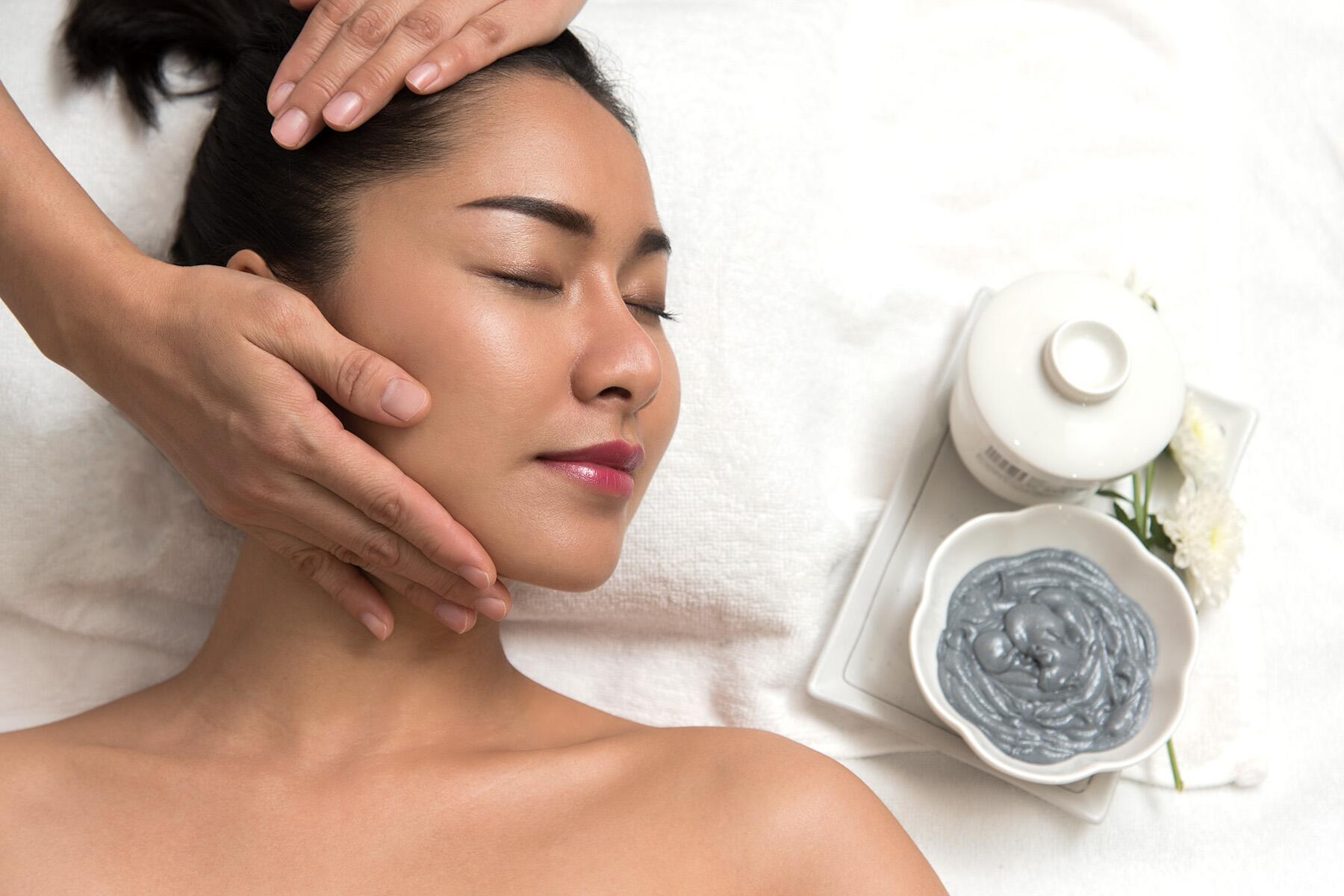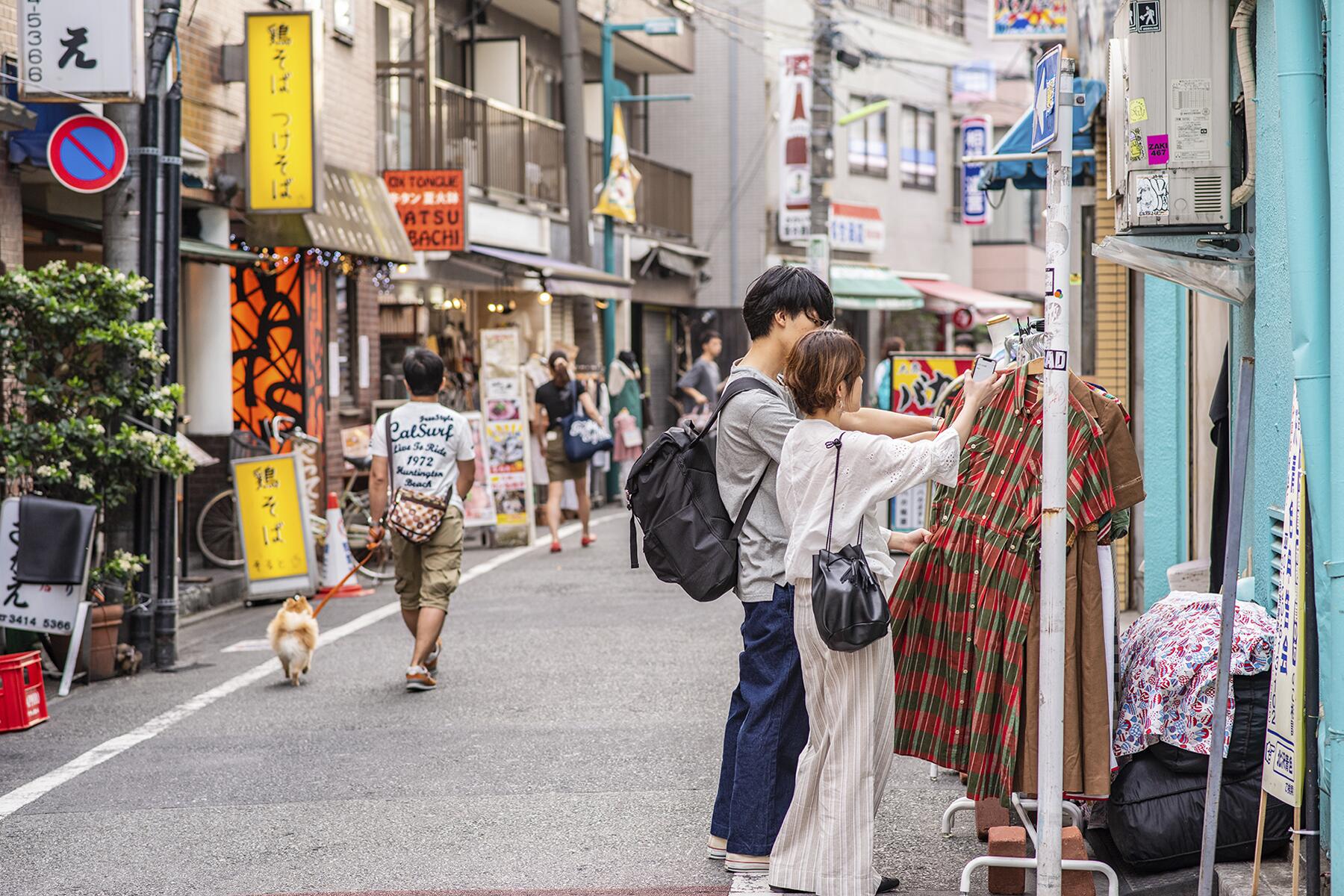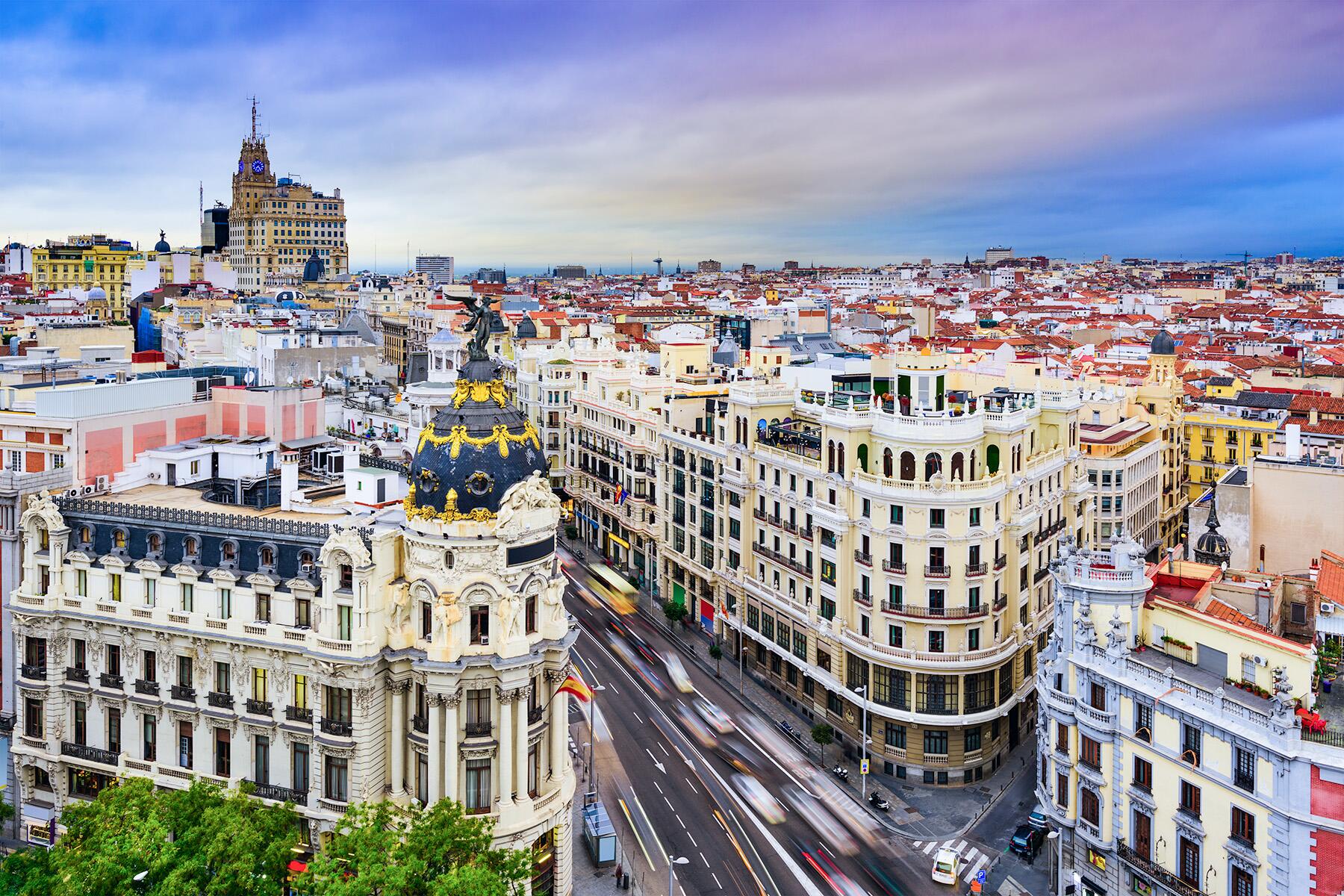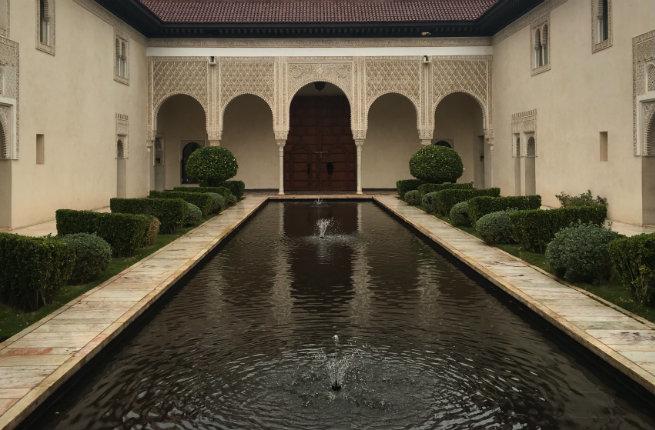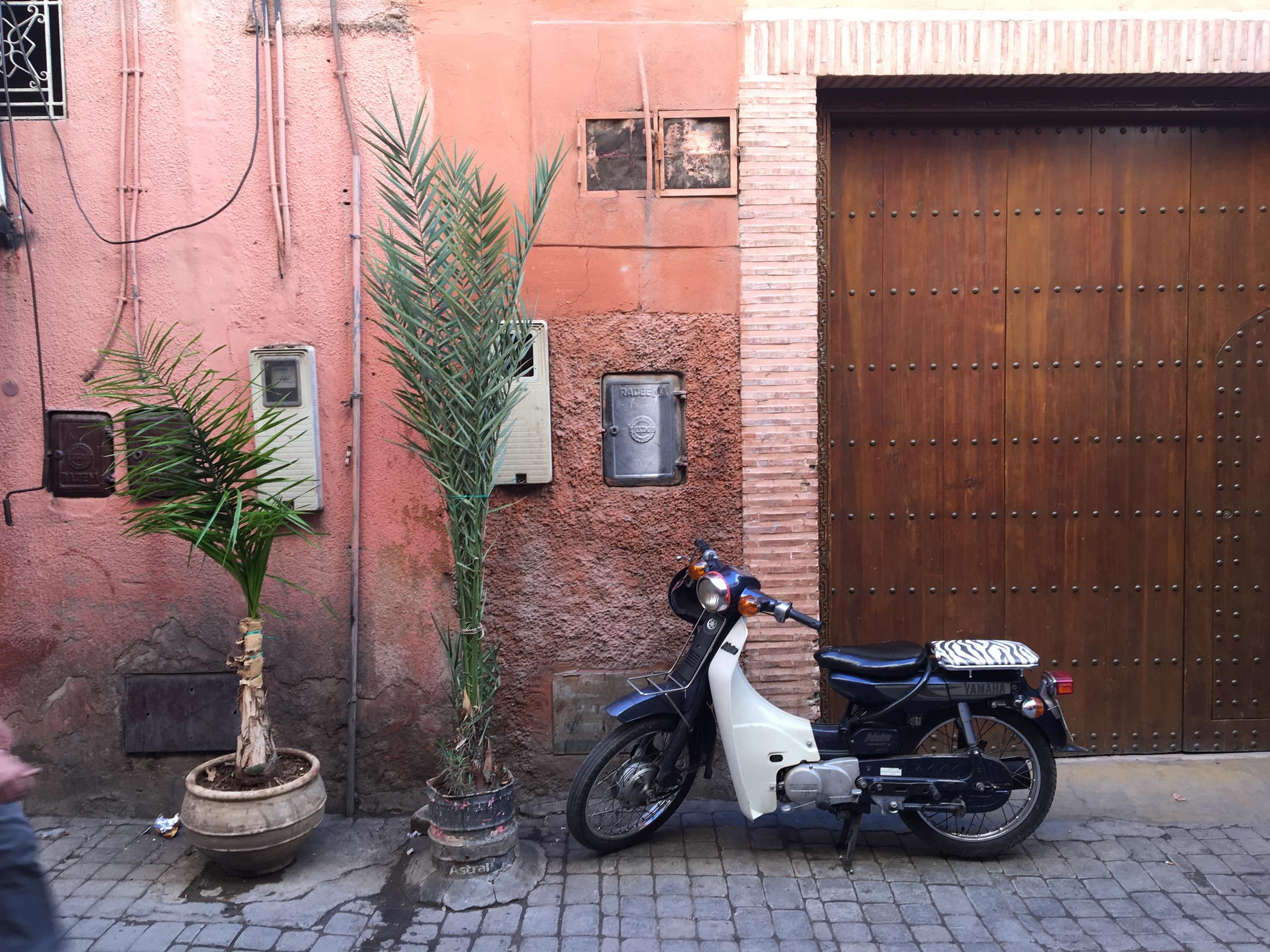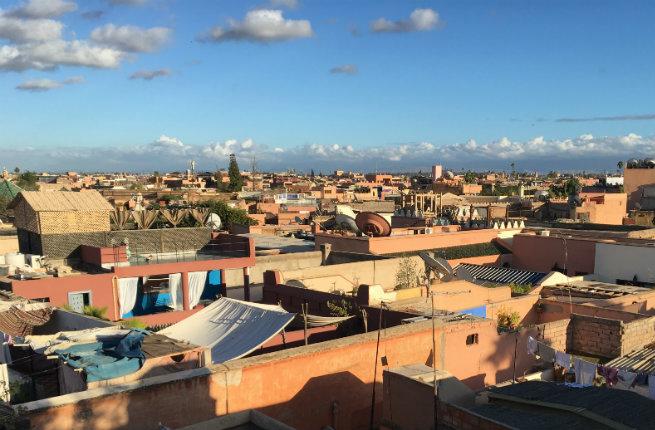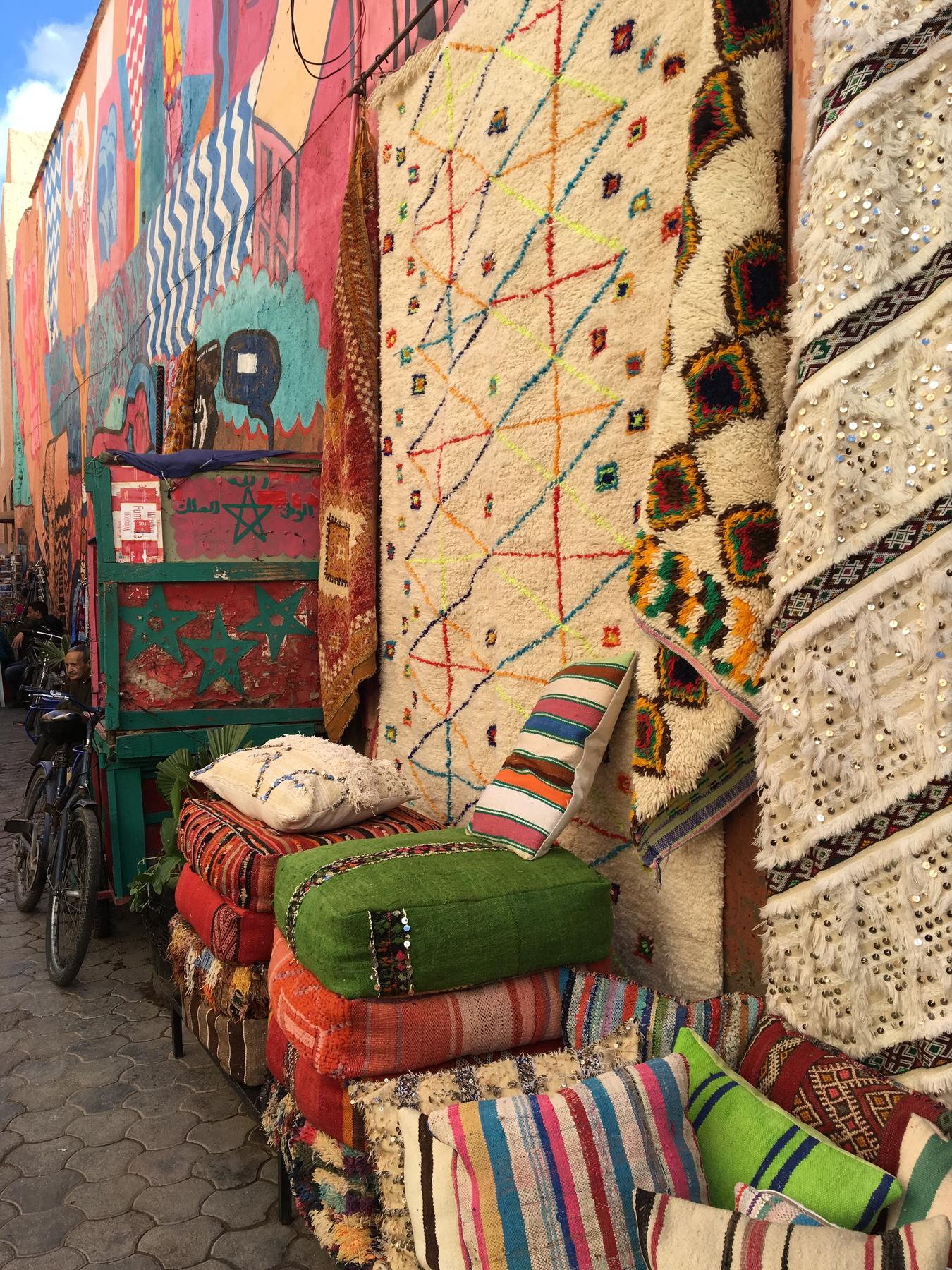Marrakech is a romantic and magical city that feels trapped in time.
There’s a surprise around every corner in Marrakech, and the more lost you get, the more you’ll discover and the more fun you’ll have. The best way to enjoy the city is on foot in the heart of the medina, Marrakech’s walled old town. You’ll see artisans hard at work creating leather goods and weaving rugs alongside hawkers selling everything from dates and almonds to knockoff handbags.
If you love shopping, design, good food, and history, you’ll love Marrakech. Be warned that it feels a bit like Disney’s version of a Moroccan market city, but once you dive in and experience it for yourself, you’ll see that there’s a fine line between authentic and cheesy in this magical place.

Day 1
Most connecting flights arrive in the afternoon, which gives you enough time to find your hotel and relax by the pool for a bit before heading out for the evening. Around sunset, stop for a drink at the famous La Mamounia Hotel, one of the grandest hotels in Africa. (Don’t book a room here, though—the hotel is huge and impersonal, the rooms are exorbitantly priced, and the stuffy European-inspired decor completely misses the mark.) Have a seat in the plush bar to people-watch and drink a classic cocktail from the extensive menu. After you’re done, exit through the stained-glass doors for a sneak around the elaborate gardens and property. If you time it right, you’ll be able to hear the sundown call to prayer from nearby Koutoubia Mosque.
Recommended Fodor’s Video
For dinner, make a reservation at Dar Marjana and make sure to show up ravenous. It’s in the medina but directly accessible by car, so you can take a taxi there from any hotel. You’ll be treated to dinner and a show in an over-the-top Moroccan setting that falls right on the fun side of kitschy. If you’re looking for an authentic Moroccan experience, you definitely won’t find it here, but it’s hard not to have a good time while you indulge in course after course of fantastic food and listen to live music in a romantic candlelit setting. Drink enough wine to get up and dance with the performers, but remember that tomorrow is a big day.
Day 2
Fill up with a hearty breakfast and put on some (preferably close-toed) comfortable shoes because today is for exploring. Get a map from your hotel and start your day in the medina, a maze of market stalls, plazas, mosques, and souks, which are artisan workshops and markets.
Within the medina there are a number of things to do besides shopping. It’s best to do these in the morning while browsing and then leave the afternoon open for shopping and getting lost. Start at La Bahia Palace, a 19th-century architectural wonder with elaborate gardens that was once home to a harem. From there, walk to Djemâa el Fna, Marrakech’s main square. Beware of sensory overload, and if you’re traveling with a group, make sure to stay together. Between musicians, snake charmers, and hawkers, it’s easy to wander off and get distracted. If you need a midmorning pick-me-up, there are cafes lining the square where you can get a coffee or snack.
The next stop is Maison de la Photographie, a museum showcasing archival black-and-white photographs of Morocco. The nearby Le Jardin Secret is an oasis in the medina. Hidden behind a nondescript wall, this literal secret garden is worth the small entrance fee to feel like you’re a world away from the hustle and bustle of the market. Take a few minutes to walk around and wonder at the plants and architecture before making your way to lunch.
Nomad is one of the best and most popular restaurants in Marrakech. Even if you’re here for just a long weekend, you’ll want to eat at this place more than once (it’s okay—go ahead). There’s no alcohol served, but there are two levels of lovely rooftop terraces looking over the medina and plenty of delicious non-alcoholic beverages like mint tea, espresso, and avocado smoothies. The menu is modern Moroccan and vegetable-focused, but there are also some delectable meat dishes. If you’ve been in Morocco for a while, you’ll be delighted by all the fresh greenery and salads offered. This is the kind of place to go with friends and order one of everything on the menu. Make sure you leave room for dessert—the date cake is out of this world.
After lunch, it’s time to get lost in the medina. The deeper in you go, the more interesting things get. Forget the map for a while and follow your instincts. The medina is full of beautiful things for sale: hand-carved wooden furniture, woven rugs, leather goods, silver jewelry, brass lamps, ceramics, silks and clothing, antiques, spices, perfumes, and herbs. As a general rule, don’t do any impulse buying. You’ll see many stalls selling the same kind of items, so the best plan of attack is to ask three different places for the price before buying—you’ll notice that the price may vary hugely depending on whom you ask and who does the asking. If you’re interested in something, casually ask the price and pretend to walk away as if you’re not interested; that’s when the haggling begins. In general, you can expect to pay about 1/10 what you think the price of the item would be in a boutique in New York or L.A. For instance, you can get a gorgeous 5 x 8 rug for about $100, wool blankets should be $20, leather shoes should be $5–$20, and glass and ceramics should be about $.50 – $1.50 apiece. Once you’ve made the deal, remember to shake hands, smile, and say thank you (pronounced shukraan in Arabic)!
INSIDER TIPCommon sense tells you that buying a rug in the rug souk (directly from the artisans who are doing the weaving) will get you the best price, but that’s not necessarily true.
Once you’re tired out and loaded down with the chicest souvenirs on the planet, it’s time to find your way back to the hotel. Your best bet is to walk to the main square or any other recognizable landmarks in order to re-orient yourself and navigate your way from there. Most shopkeepers are happy to point you in the direction of the main square and there are some sporadic signs, but you might be met with blank stares if you ask people where your hotel is.
If the weather is nice, relax by the pool or have a drink outside until it’s time for dinner. If you’re staying in the medina, you can walk to Dar Cherifa. If you’re staying outside the medina, you’ll have to get a taxi to drop you off and you’ll need to walk about 3 minutes into the medina through dark and winding alleyways. Just when you think you’ve gone too far, you’ll see a heavy wooden door with a small brass sign. Inside is Dar Cherifa, located in one of the oldest riads (a traditional Moroccan inn) in Marrakech. The space is gorgeous, with peach-colored walls, an open atrium, and low tables with cozy seating. The menu is classic Moroccan and you can’t go wrong with salads (usually eggplant, tomato, and cucumber) and couscous.
INSIDER TIPAfter dark, the medina can feel a bit sketchy, especially if you’re a woman. Cover up, walk quickly, and don’t make eye contact or engage with anybody.
If you’d like a nightcap before going to bed, it’s worth a visit to nearby Riad el Fenn, a gorgeous hidden hotel with a hip bar and rooftop serving craft cocktails. Things tend to wind down early, but it’s a nice place to stop on your way home or even before dinner—the roof is a great place to catch the sunset.

Day 3
Today is about rest and relaxation. After breakfast at your hotel, pay a visit to Jardin Majorelle, the private gardens built by French painter Louis Majorelle in 1922. In 1962, fashion designer Yves Saint Laurent bought the house and gardens. Just a few minutes’ drive outside the medina, it’s a pleasant place to spend the morning. There’s also a small museum of Islamic art and a café on the premises.
Stay with the garden theme and have lunch at Le Jardin, located in the medina. The menu is French-inspired, with things like salade Niçoise alongside classic Moroccan dishes. The setting is nice enough to make you want to linger all afternoon, so feel free to do so. The upstairs boutique is worth a peek, too.
After a satisfying lunch, it’s time to get pampered, Moroccan-style. While the more adventurous travelers (or those on a very tight budget) may want to try the public hammam, we recommend you get the gist of the treatment in a tourist-friendly spa setting before diving into the real deal. Book a hammam and massage at Le Bain Bleu, an affordable (around $50 for a 1-hour treatment) yet upscale hammam located down a narrow alleyway. Signage is well posted, so don’t worry about getting lost. The hammam treatment can be extremely awkward (and a little confusing) if you’ve never done it before, so it’s best to go in with an open mind and a good sense of humor. Once you’ve stripped to your underwear (you must leave your underwear on), you’ll be taken to the hammam room, where you’ll have every inch of your body soaped, roughly scrubbed, and washed in a no-nonsense utilitarian manner. There’s nothing relaxing about it, but it’s fun and invigorating. After the scrub, you’ll be treated to a relaxing argan oil massage, giving your travels home a little bit of Zen.
INSIDER TIP If you love the products at the hammam, stop by a stall in the Medina to bring home some argan oil.
Where to Stay
There are two types of hotels in Marrakech: cozy hidden riads within the old city, and sprawling luxury compounds outside the city. If it’s your first time in Marrakech, we recommend staying in the medina. There are plenty of options ranging from cheap hostels to luxurious palaces, but Riad L’Orangeraie, Riad Yasmine, and Riad el Fenn are the chicest and coziest places to stay with the best locations.
If you have your heart set on a quiet and spacious setting outside the city walls, there are plenty of choices: The Ksar Char Bagh and Palais Namaskar are both out-of-this-world luxurious, with an astronomical price tag to match. If you can afford it, the Royal Mansour offers over-the-top accommodations and a world-class spa just a short walk from the medina.
Getting There
There are no direct flights from the U.S. to Marrakech, so all U.S. flights connect through Casablanca. There are also plenty of direct and cheap flights from hubs all over Europe on easyjet and Royal Air Maroc. If flying through Europe to save money, your best bet is to connect through Paris.
When to Go
Marrakech is best visited in the late spring and early fall, when the temperature is hot and sunny, but not unbearable. The winter is mild and less crowded and the cooler temperatures mean it’s easier to cover up and not stand out as a tourist. Avoid the height of summer, when the heat can be unbearable.
